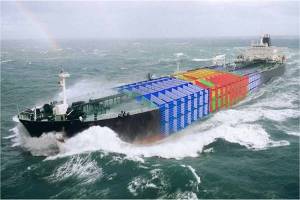Collier Research Corporation released its HyperSizer v6 structural sizing and analysis software for reducing weight, maintaining strength and improving the manufacturability of complex composite and metallic designs. Developed and proven at NASA, the software — the first ever commercialized by the agency — has a track record of 20 percent weight reduction in high-profile government and commercial aerospace projects. In addition, HyperSizer’s design and manufacturing capabilities are appropriate for optimizing composite-driven designs in a wide variety of industries including ship superstructures.
Composites have now gained wide acceptance and validation in aerospace applications and accelerating growth in a variety of other industries. Their weight-to-strength properties promote fuel efficiency and the achievement of energy targets without impacting durability. “One of the biggest roadblocks to effective composite design is the inability of engineers to adequately explore optimized layups simultaneously with other design variables,” said Craig Collier, president of Collier Research. “This results in design inefficiencies and compromises.”
To address these issues, HyperSizer integrates with FEA solvers in a continuous, automated iterative loop, conducting trade studies and examining millions of potential design candidates down to the ply, even element, level. The software ensures structural integrity through an extensive suite of failure analysis predictions that are validated to test data. The tool also enhances manufacturability by minimizing ply drops, identifying and controlling laminate transition drop/add boundaries, and defining best ply shapes and patterns. Hypersizer can be used from preliminary design to final analysis.
New features in HyperSizer v6 include:
· Manufacturability Optimization – To help design for efficient manufacturing, the software now has the capability to identify, define, and control ply-count compatibility, laminate sequencing, interleaving, and ply-drop minimization. This results in fewer processing steps, cost-effective layups, and faster turnaround in the mold.
· Post-Buckling Analyses – Automated compression, shear, and compression-shear post-buckling analyses, based on complex NASA-developed methods that serve as the foundation for metal aircraft design, have now been added. Integrated with flexural-torsional buckling, these allow engineers to cut weight in aluminum skin airframes. Such analyses, difficult to perform with nonlinear FEA alone, have been extended to composite material systems as well.
· Panel Concepts – Two novel, damage-tolerant composite architectures are now available, providing more structural sizing variables and optimization flexibility: PRSEUS is a Boeing/NASA/Air Force Research Lab-developed dry-fabric woven material poltruded rod structure, while “reinforced core sandwich” is an alternative sandwich panel similar to foam sandwich. Specialized analyses for both these panel concepts have been implemented and correlated to test data established for accurate predictions of strength.
Serving as the analysis hub and automating data transfer during both design and manufacturing cycles, HyperSizer integrates with FEA software, such as Nastran and Abaqus, and with composite CAD tools, such as CATIA and FiberSIM. HyperSizerensures that design and analysis departments are kept current and working with the same design data.
“Given the increasing emphasis on more complex materials, engineers need to improve and automate their design processes to reach even higher levels of efficiency,” said Collier. “It’s no longer good enough just to spot-check. Each part needs to be examined as a system. HyperSizer allows engineers to more fully explore the entire design space.”
“It’s challenging to cut weight while maintaining strength and controlling cost,” said Tom Ashwill, technical leader in Sandia National Laboratories Wind Energy Technology Department. “HyperSizer has the capability to systematically optimize the placement of a variety of different materials throughout the blade to maximize load resistance and minimize weight and thus cost.”
Collier Research will be featuring HyperSizer v6 at the upcoming SAMPE (Society for the Advancement of Material and Process Engineering) conference, Booth 1434, May 23-26 in Long Beach, CA. For those interested in learning more about the software’s capabilities, Collier will present a paper on Simulation Based Optimization (“Automated Analysis and Failure Load Prediction of Bolted Composite Joints”) on May 23 in Room 201 from 3:15 to 3:45 p.m. PDT. There will also be a HyperSizer Seminar—please see us at our booth for exact time and location.













